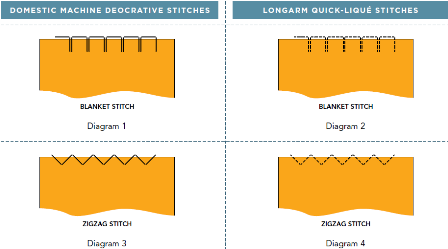Quilting the Quilt: Try these machine appliqué shortcuts

Do you need to make a quilt in a hurry? If you find yourself in a time crunch (or you just like to get things done fast) you can shave hours off your completion time with these machine appliqué shortcuts I call Quick-liqué.
I love that my longarm machine can do more than simply quilt! It just requires a little “out-of-the-box” thinking about how I move my quilting machine. Domestic machine appliqué is typically done using a zigzag stitch, satin stitch, blind hem stitch, or blanket stitch. Even though my quilting machine only sews a straight stitch, I can simulate all of those decorative stitches and more by guiding it in different directions—just as a domestic machine quilter would manipulate her fabric while darning or thread painting. With just a little practice you’ll be pleasantly surprised at how well you can accomplish these stitches using a stand up machine!
My Quick-liqué techniques work well on domestic machines as well as longarm machines. This method does have one caveat, however. To make it super-fast, the appliqué pieces have raw edges that are secured with decorative stitching. Your fabric patches may have some slight raveling around the edges, creating a more casual appearance. If you prefer a more finished look, use the simulated satin stitch and place your stitches very close together to cover the edges more thoroughly.
Experiment with your machine’s stitch mode settings and tension to give you the best results. For example, you may feel more comfortable using your machine’s stitch regulator for regular quilting. Shorten your normal stitch length so that your machine will make smaller stitches. This gives you more control as you make tiny maneuvers to create different stitch patterns. Adjust your tension to give your stitches clear definition. I placed a pin next to my practice stitches in Photo A to show you where I adjusted my tension. To the left of the pin, the top thread is pulling the bobbin thread to the top. I slightly tightened my bobbin tension and slightly loosened the top tension to get great stitch quality—even when making tiny turns.



